#Asclepias syriaca (Common Milkweed)
Text
*cracks knuckles* Alright everyone strap in.
Hi, I'm Ani, the appointed Milkweed Queen of several Discord group chats, and I'm gonna talk about some of my favorite types of milkweed because its Earth Day, I'm bored, and I had nothing else ready to post. Everyone ready?
I'm not going to give these a formal ranking, I'm just going to ramble about them.
We all know the important reasons to like milkweed--supporting Monarchs, feeding the pollinators, restoring native species to your local habitat and creating an environment for many creatures to live in, that's all fantastic obviously. With that established, this ranking system will have little to do with that. We're talking aesthetics, babey! And any fun facts I happen to toss in are, well, fun facts. If you learn about a new kind of milkweed from this, or want to chime in with your own favorites, by all means let me know!

Swamp milkweed (Asclepias incarnata)! If you've been following my blog for awhile, you likely know I've been on a Grand Quest to find, purchase, and/or grow swamp milkweed for a few years now. Honestly, though, who can blame me! Look at those vibrant pink flowers, contrasting with those bright green leaves! Love at first sight, I'm telling you. I've also heard that it smells like vanilla. Vanilla! It's also, reportedly, one of the few types of milkweed that excels in wet environments, and even though my environment isn't very wet, we stan a queen for that quality.
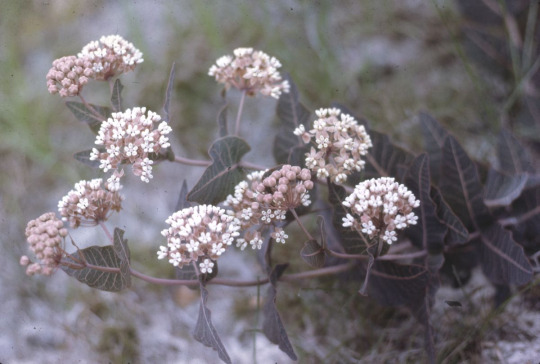
Whether you prefer to call it Sandhill Milkweed or Pinewoods Milkweed, Asclepias humistrata is a champion of sandy soils and also my heart. I hadn't looked too far into this species until late last year, when I was helping another friend look at different milkweeds, but how could I not look into this beautiful plant! With pink stems and veins as early as the seedling stage, pinkish-white flowers and a low-growing spread habit, I would be honored to grow such a specimen in my garden. Their inch-thick, foot-long tap roots help them to quickly spring back to life after a wildfire, providing important food and habitat for creatures returning to the area. How lovely!

Redring milkweed (Asclepias variegata) is another species I hadn't looked too far into until this year, and honestly at great detriment to myself. I'll be honest! I may have ignored this queen at first because I'm not big on white flowers, but those red rings...! Ooh, I want this so bad. The leaves are also fairly big and a lovely dark green, which just makes the white and red pop out more!

Heartleaf milkweed (Asclepias cordifolia) is honestly so iconic, I wish it was native to my region! If you live on the West coast... grow some for me please. How can you not love this specimen! Dusty green heart-shaped leaves directly attached to pink stems, these stunning deep reddish-purple flower clusters...! I continued following one of the most annoying people I'd ever witnessed on Instagram for two months just because I first saw this species in a tiktok of his.

Purple milkweed (Asclepias purparescens) is honestly just. A queen. What else is there to say? Look how purple she is! So purple I almost can't believe it's even real, and yet they are! Not native to my region, far as I know, which is a bummer. I've heard they're hard to grow, but if you can manage it? Share your secrets with the world, honestly, we need more of this plant in our lives.
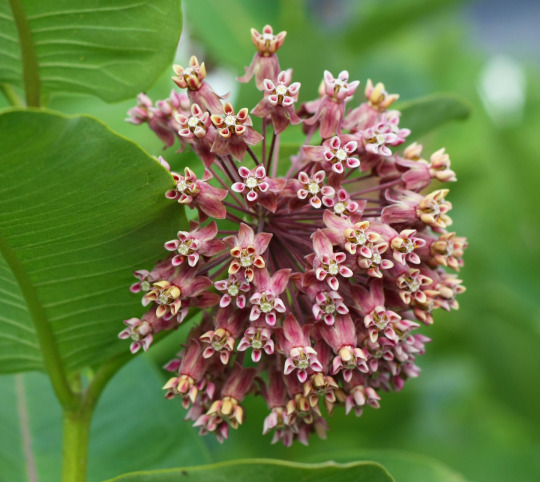
Common milkweed (Asclepias syriaca) is honestly just a classic. I love the light pink of the flowers, and those leaves are huge! I've heard they spread like wildfire, but with clusters of blooms like this? How can you even be too mad about that?
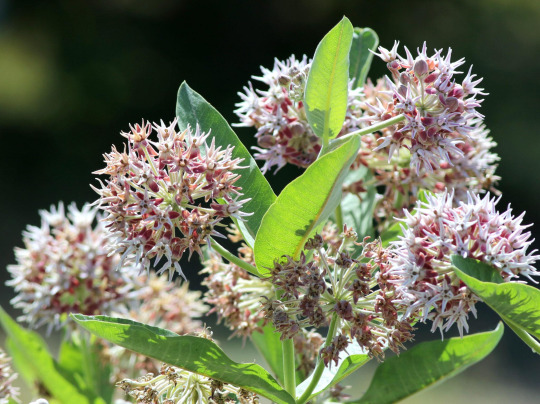
Showy milkweed (Asclepias speciosa). Honestly I'm not going to pretend I was always crazy about this species, but the more I see it pop up on iNaturalist, the more I find myself growing fond of it. These flowers look like crazy fireworks, and honestly, kinda have to stan.
"Oh, Ani, you have so many lovely favorites! Do you have any least favorite--" Tropical milkweed, hands down. I appreciate it's value as more of a 'babys first milkweed' plant but I'm tired of seeing it everywhere, especially knowing it's a bit invasive in my area?
Anyways, these are some of my favorite milkweed species! What are some of yours?
#milkweed#pollinator gardening#asclepias#asclepias humistrata#asclepias incarnata#asclepias syriaca#asclepias variegata#asclepias cordifolia#asclepias purparescens#asclepias speciosa#swamp milkweed#sandhill milkweed#pinewoods milkweed#redring milkweed#red ring milkweed#heartleaf milkweed#heart leaf milkweed#purple milkweed#common milkweed#showy milkweed#gardening#flowers#pink flowers#purple flowers#white flowers#ani rambles#out of queue#pollinator garden
185 notes
·
View notes
Text
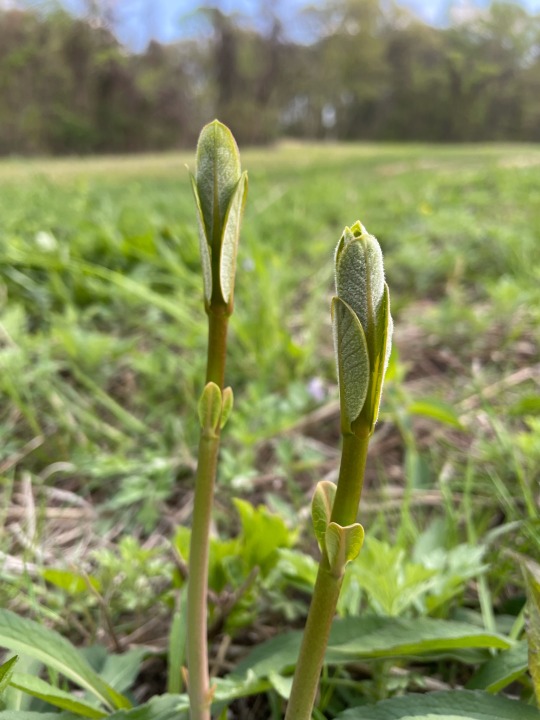
Milkweed shoots.
18 notes
·
View notes
Photo


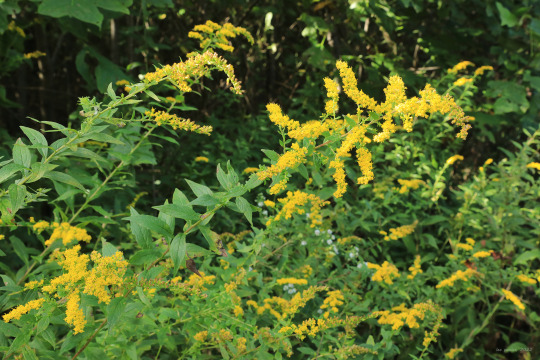
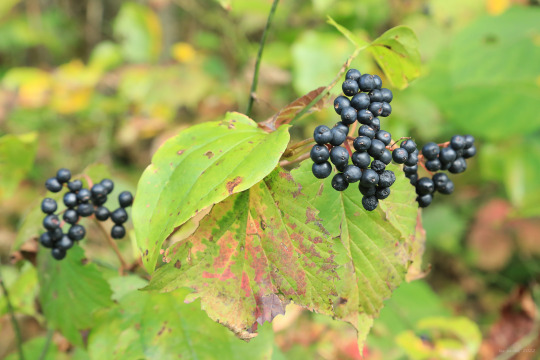
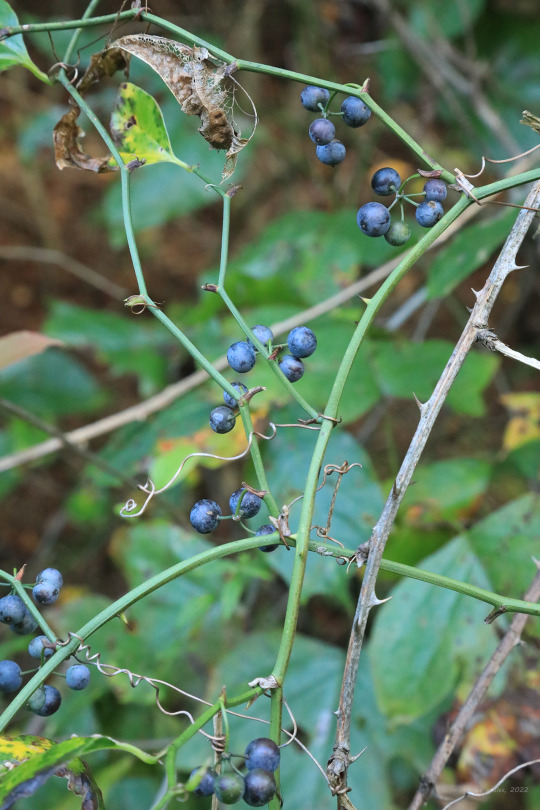


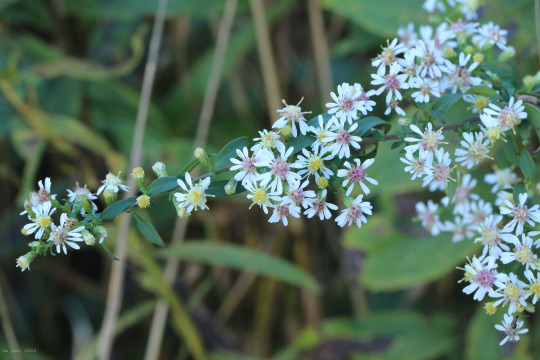

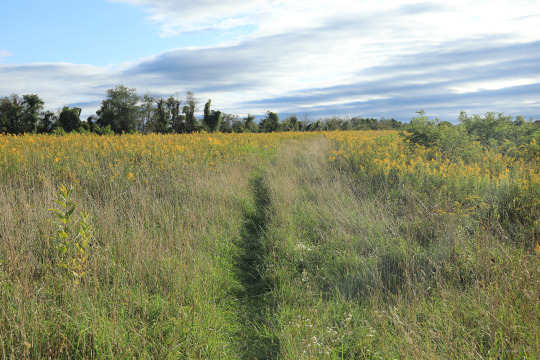
Early fall stroll through an upland meadow at Snake Hill Wildlife Management Area. The Solidago was just divine.
#appalachia#vandalia#west virginia#snake hill wildlife management area#chestnut ridge#solidago#solidago ulmifolia#elm-leaved goldenrod#elmleaf goldenrod#viburnum acerifolium#mapleleaf viburnum#smilax rotundifolia#common greenbrier#symphyotrichum prenanthoides#crooked-stemmed aster#crooked stem aster#zig-zag aster#asclepias syriaca#common milkweed#symphyotrichum lateriflorum#calico aster#symphyotrichum pilosum#frost aster
100 notes
·
View notes
Photo

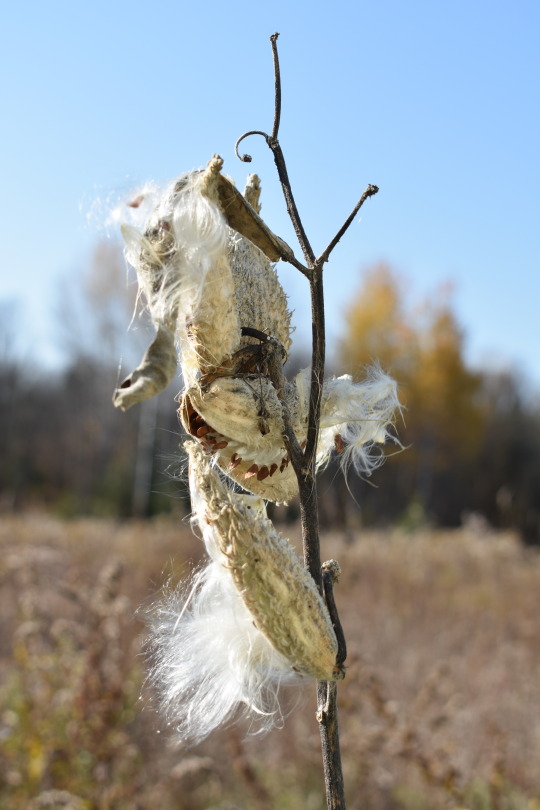
Common Milkweed
Asclepias syriaca
Apocynaceae
Photographs taken on October 22, 2022, at Marmora and Lake, Ontario, Canada.
#wildflowers of southern ontario#Common Milkweed#milkweed#Asclepias syriaca#seed pod#Apocynaceae#Asclepias#Marmora and Lake#Ontario#Canada#Marmora
17 notes
·
View notes
Photo
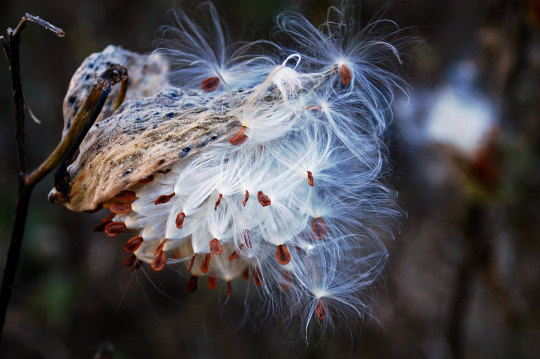
Common Milkweed by Karin Lewis on Flickr.
This work is licensed under CC BY-NC 2.0.
#common milkweed#milkweed#asclepias#asclepias syriaca#brown#fruit#landscape#wild#wildflowers#botany#creativecommonsplants#creative commons#plants#plant blog#plant photography#flickr
6 notes
·
View notes
Text
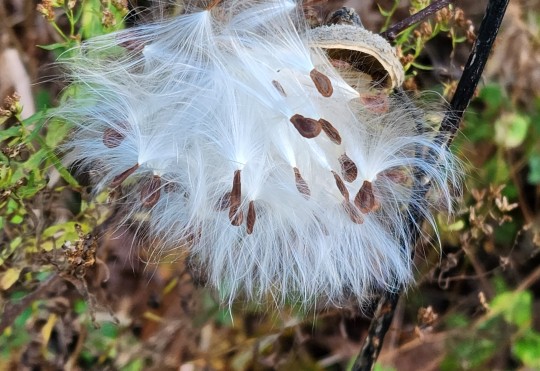
Nov 6, 2022 - at the edge of the swamp - on yesterday's afternoon dog walk
#common milkweed#asclepias syriaca#seed dispersal#nature#november#island#martha's vineyard#massachusetts#new england
6 notes
·
View notes
Text
Wildflower Walk ?
Hello everyone! I hope this post finds you all well. I apologize for not posting for a while. It has been a weird summer for sure with the heat and drought. I was busy with the garden picking sweet corn and green beans right up until August 17. Somehow I managed to get 455 ears of sweet corn in the freezer, and thanks to the ‘Provider’ green beans, 34 quarts of green beans. Of course, not all the…
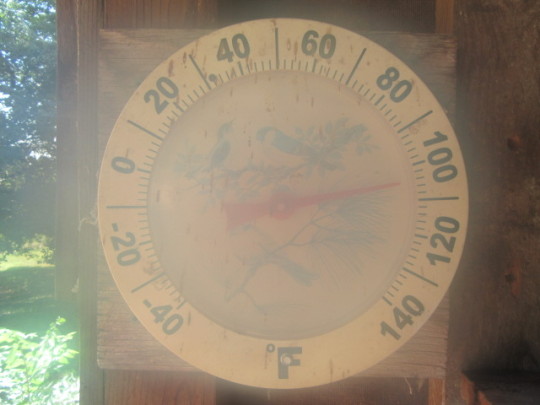
View On WordPress
#Ambrosia bidentata (Lanceleaf Ragweed)#Asclepias hirtella (Prairie/Tall Green Milkweed)#Asclepias syriaca (Common Milkweed)#Bidens aristosa (Tickseed Sunflower or Bearded Beggarticks)#Datura stramonium (Jimson Weed)#Elephantopus carolinianus (Leafy Elephant&039;s Foot)#Erechtites hieraciifolius (Fireweed/Pilewort)#Erigeron annuus (Annual or Daisy Fleabane)#Etc.)#Eupatorium serotinum (Late Boneset)#Impatiens capensis (Jewelweed)#Lespedeza cuneata (Chinese Bushclover)#Persicaria hydropiper (Water Pepper)#Persicaria pensylvanica (Pinkweed)#Phytolacca americana (American Pokeweed)#roton capitatus (Hogwort/Woolly Croton/Goatweed)#Rudbeckia hirta (Black-Eyed Susan)#Sida spinosa (Prickly Fanpetals)#Solanum sarrachoides (Hairy Nightshade)#Solidago sp. (Goldenrod)#Symphyotrichum lateriflorum (Calico Aster)#Tridens flavus (Purpletop#Tripsacum dactyloides (Eastern Gamagrass)#Verbesina virginica (White Crownbeard/Frostweed)#Vernonia missurica (Missouri Ironweed)
0 notes
Text
Noticed the first teeniest, tiniest true leaves on my milkweed and goldenrod today

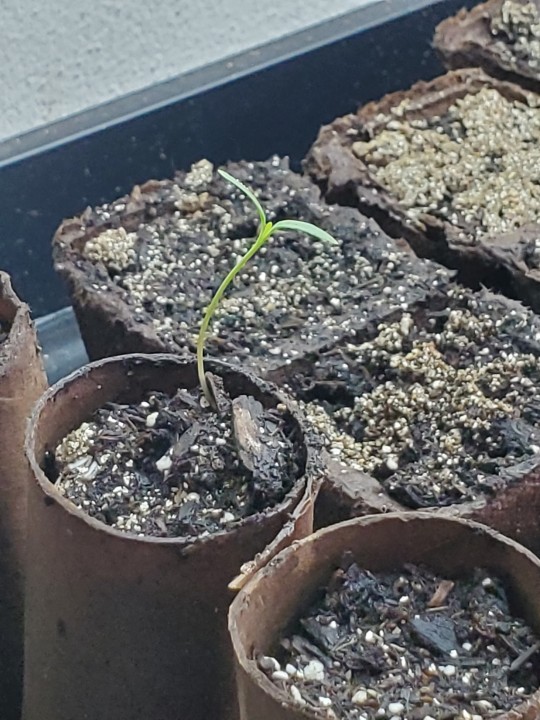
0 notes
Text


Oleander Aphid (Aphis nerii) feeding on common milkweed (Asclepias syriaca)
158 notes
·
View notes
Text
Collecting Milkweed Seeds - All Facts, All Seeds, No Fluff
(OK but please also consider I'm not an ~expert~ I'm not a ~scholar~ I'm just a nerd on Tumblr who really likes milkweed and wanted to make a fun lil post about it)
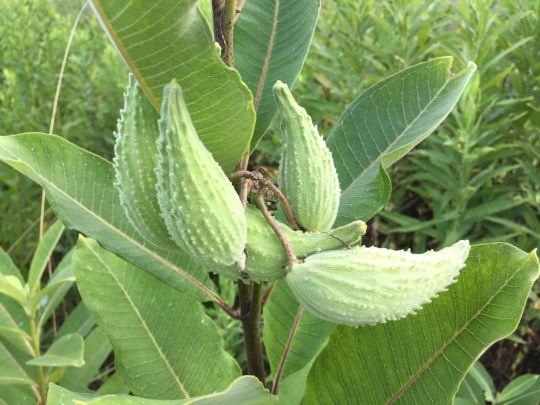
[Image ID: a green, leafy common milkweed plant (Asclepias syriaca) with five large, ovalish and bumpy green seed pods. The seed pods are currently unopened.]
It’s fall, which means if you haven’t seen them already, now’s the time that milkweed plants will start producing seed pods! (Well, technically, they’re called follicles, but fuck it they’re seed pods). Each pod has dozens of seeds inside, some species can even have up to 200 seeds, so even collecting just a few can be a good way to boost your pollinator gardening efforts big time! What you do with them then is up to you--adding life to your backyard garden, sharing with friends, making seed bombs--but first you’ve gotta collect them.
The first thing you want to do is identify your milkweed plants--in an ideal world, you’d be able to tell precisely what kind of milkweed you’re collecting from (so you can know precisely what growing conditions that species prefers.) But when they’re dying back, forming pods, and releasing their seeds, it can be hard to tell. It helps to visit sites early, to know what milkweeds are there, and while you’re there you might even find some forming pods.
It can be helpful to band off the pods early! This will keep the seeds from escaping, so you can come back later and collect them! I would only do this for a couple of pods--each pod has a lot of seed in it, so only taking one or two from each plant should still net you plenty of rewards! When I’m doing this in my backyard, I tend to use rubber bands--the size of rubber band you’ll need varies depending on the species. I’ve also seen people use the lacy-looking jewelry bags to a similar effect--if the pod splits open, all the seeds get trapped in the bag!


[Image ID: the first image is of appears to be swamp milkweed (Asclepias incarnata) with about fifteen long, green, smooth and pointed seed pods. Most of the pods have small black rubber bands wrapped around the midsections. The second image is of what appears to be common milkweed (Asclepias syriaca) with two large, ovalish and bumpy green seed pods. A white fine mesh bag has been tied over the pods.]
For people who want to get seeds from unopened pods, you have to be very careful not to force open a pod that isn’t ready--otherwise, the seeds inside won’t fully develop. How do you tell if a pod is ripe? There’s a seam in each pod, and it should open fairly easily with minimal pressure if it’s basically ready. If you’re basically prying it open, you’re too early. The seeds inside should be a nice dark color, and be plump in the middle--if they’re creamy colored or light orange, you’re too early. There may be some undeveloped seeds in each pod (I am talking maybe 1 to 3 here), but if the majority of them are ready, you’re good to go!

[Image ID: a tropical milkweed (Asclepias curassavica) seed pod that has been opened at the seam, revealing dark brown seeds and lots of creamy white floss. Four seeds are floating away from the pod on fluffy white comas. The pod is being held between a white person's fingers.]
I’ve also seen people who go late late late into the season, after most of the pods have already fully split off and released their seeds. Some of the seeds occasionally stay in the pod, so they’ll take the leftovers that didn’t get scattered after winter passes. That’s a fair strategy! I prefer to get mine way early on, so I can get a clear ID of what kind of milkweed it is (some will flower and produce pods at the same time), but if you already got an ID early in the season and then come back later this can also work! But…

[Image ID: several dried brown seed pods have opened fully, releasing a cloud of milkweed floss with seeds attached. Some seeds are still in the pods, but many are primed to float away.]
There is, however, one thing that tends to be a bit annoying about collecting milkweed seeds--and that’s the fluff. These fluffy white bits attached to the seed--called comas--function similarly to the iconic fluffy dandelion seed. A milkweed seed’s coma allows it to float through the air and on the water until it (hypothetically) reaches bare soil or an otherwise suitable start to settle down and germinate. If you’re collecting the seeds for later use, though, that same coma can mean your milkweed seeds are traveling through the air and away from where you’re collecting them, or all over your apartment once you get them home. Removing the comas by hand is an option, but tedious, and still leads to a nice pile of fluffy that will get airborne at the first gust of wind. At the end of the day, for many people trying to collect milkweed seeds, the coma is just an annoying part they dread.
Fortunately, there are plenty of ways to collect milkweed seeds without having to deal with the comas long-term!

[Image ID: A single brown milkweed seed floating on a comparatively huge mess of white fibers.]
Method 1
So this is my favorite method because it's honestly one of the simplest and easiest once you get used to it. You open the pod, grip the top part of the middle ‘pith’ section tight, and gently scrape off the seeds into a bowl or bag. This leaves you with almost no fluff in your collection bin, and you can then toss the middle fluffy part--or I’ve heard of people collecting milkweed fluff for spinning! Most of the videos I’ve seen on it use common milkweed or other large milkweed pods as an example--however, I’ve successfully done this with smaller milkweed pods like A. curassavica as well.
youtube
Method 2
This method is one I’ve used in the past. Take the seeds and fluff and put them into a bag (paper or plastic) and add a coin or two. Shake the bag around--a lot. The coin will dislodge the comas from the seeds. The seeds will then drop to the bottom of the container, and the fluff will float around on the top. I’ve also seen this with buckets and blocks, like in the video below!
Method 3
I’ve seen a handful of people discuss burning the floss of the seeds! Apparently the seeds themselves aren’t damaged badly by the fire, though honestly this is a method that I am simply too anxious to try myself.
youtube
Method 4
This was a method I found while I was looking for other methods people have done. Apparently, you can just roll the pod between your hands and it’ll work to dislodge the seeds? I may have to try it next time!
youtube
Hopefully this advice is helpful for you all! I know collecting seeds was a hassle for me before I learned my favorite method. If I had a nickel for every time I got yelled at for releasing milkweed fluff into the house...
If you've got a method that I haven't heard about yet, let me know!! I'm always down to learn more about milkweed, and it can also help someone else down the line!
#milkweed#asclepias#seed saving#seed collecting#pollinator garden#outdoor gardening#gardening#flowers#ani rambles#out of queue#i think this was my first time doing image descriptions??? if they suck ass let me know and I'll Make Adjustments As Recommended#i've seen people talk about spinning the milkweed floss??? but I saw online that it was too brittle to be spun????#but either way if you wanna save the floss and do Stuff with it go for it#did you know. or actually this is me functioning from memory.#but if I recall correctly I believe in either the WWI era or the WWII era#people would pay kids to go around fields collecting milkweed seed pods and pay them by the pound#and then they'd take the floss and use it to fill life jackets for soldiers?#i think this was less of a 'extorted child labor sweat shop' deal and more of a like#'hey kids wanna earn some cash and also be a Patriotic Citizen? go find some seed pods and we'll give you money'#which i guess many people WOULD consider an Extorted Child Labor kinda deal but like#idk seems like a chill deal to me#anyways hope you guys like this post#Youtube
126 notes
·
View notes
Text

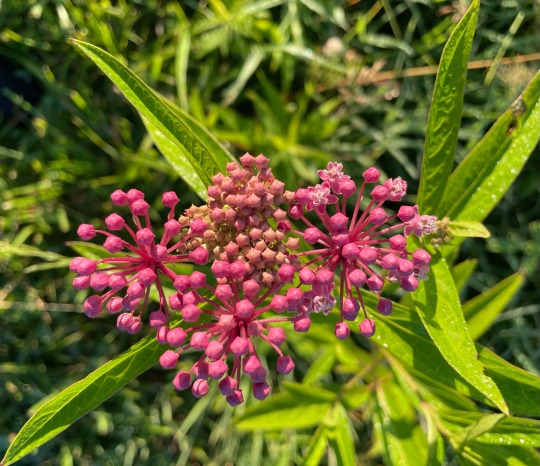
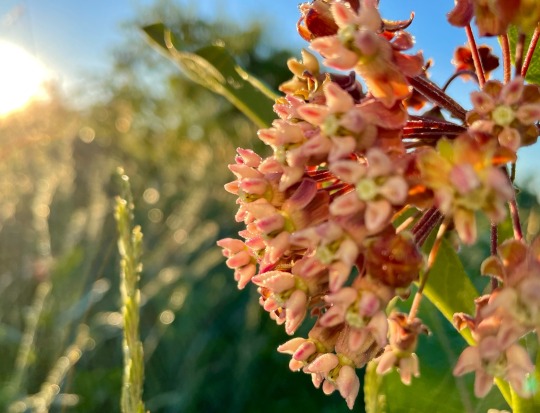
For the Asclepias fans—it’s milkweed season.
Butterfly weed, Asclepias tuberosa; swamp milkweed, Asclepias incarnata; common milkweed, Asclepias syriaca.
338 notes
·
View notes
Photo

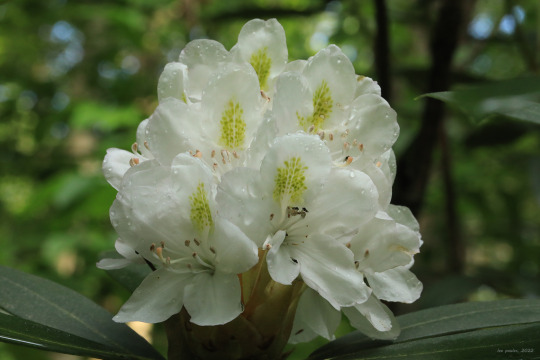
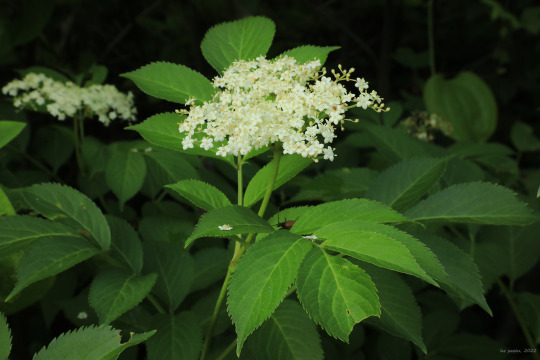

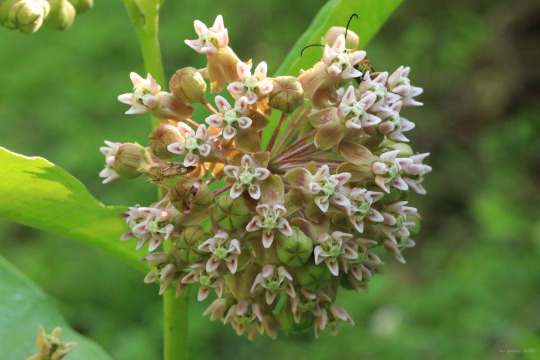





Above are a few photos from a late afternoon hike in the Cheat River Canyon, just after a line of heavy thunderstorms moved through the area. The storms were still brewing at the southern end of the canyon near Albright when I reached the overlook area. Great rhododendron (Rhododendron maximum) is starting to bloom in the canyon, but the real show is probably a week away. Milkweed is also coming on strong, with three varieties growing in the open fields and clearings around the canyon - poke milkweed (Asclepias exaltata), common milkweed (A. syriaca), and butterfly milkweed (A. tuberosa). I once heard milkweed described as a “mega-supermarket for insects”. It’s true. If you want a good starter course on the insects native to your region, then cozy up to the nearest milkweed plant in bloom with an insect field guide in hand.
From top: great rhododendron, also known as great laurel and rosebay rhododendron; American black elderberry, also known a American black elder (Sambucus canadensis), whose purple-blue berries will soon be used by locals to make wine, jam, jellies, and pies; common milkweed, which draws insects, including the banded longhorn beetle (Typocerus velutinus), in droves; butterfly milkweed, also known as butterfly weed; poke milkweed; eastern teaberry (Gaultheria procumbens), whose edible berries and leaves are used to flavor everything from tea to ice cream; and the adorable shinleaf (Pyrola elliptica), also known as waxflower, a shade-tolerant perennial of moist woods.
#appalachia#vandalia#west virginia#summer#flora#wildflowers#insects#cheat river canyon#cheat canyon#chestnut ridge#snake hill wildlife management area#rhododendron maximum#great rhododendron#great laurel#rosebay rhododendron#sambucus canadensis#american black elderberry#american black elder#asclepias syriaca#common milkweed#typocerus velutinus#banded longhorn beetle#asclepias tuberosa#butterfly milkweed#butterfly weed#asclepias exaltata#poke milkweed#gaultheria procumbens#eastern teaberry#pyrola elliptica
100 notes
·
View notes
Text
MIDWEST/EAST US: I have the following native flower (and one grass) seeds available for cost of shipping, all harvested from either my garden or from nearby parks in small amounts. if you're interested please kofi me here and shoot me a message with your address and what you'd like! amount/availability may vary but I would like to share as much as possible.
before requesting please make sure the seeds you want are native to your state! prairie moon has range maps for many of the species here; otherwise a quick search of the scientific name should let you know.
seeds I have:
-Cup plant (silphium perfoliatum)
-Common milkweed (asclepias syriaca)
-Swamp milkweed (asclepias incarnata)
-Honeyvine milkweed (cynanchum laeve)
-Maypop (passiflora incarnata)
-Bee balm (monarda fistulosa)
-Foxglove beardtongue (penstemon digitalis)
-Purple coneflower (echinacea purpurea)
-Missouri coneflower (rudbeckia missouriensis)
-Showy sunflower (helianthus pauciflorus)
-Cliff goldenrod (solidago drummondii)
-Meadow blazing star (liatris ligulistylis)
-Common evening primrose (oenothera biennis)
-Blue sage (salvia azurea)
-Little bluestem (schizachyrium scoparium)
-Blue mistflower (conoclinium coelestinum)
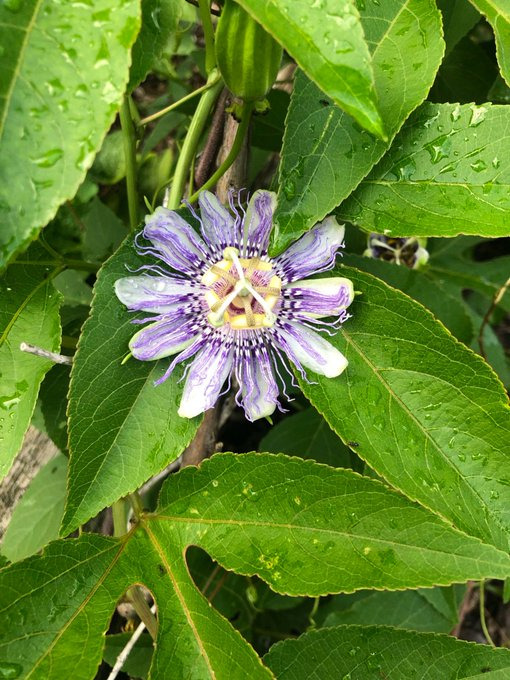

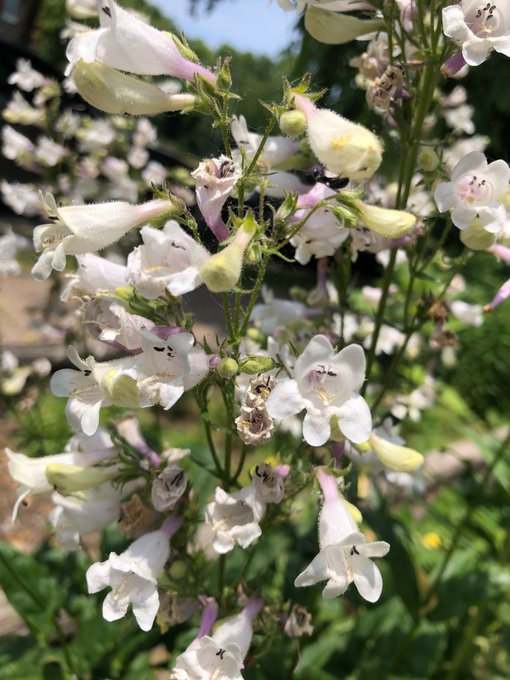

#plants#gardening#native plant gardening#native plants#flowers#prairie plants#free#maypop#sunflower#milkweed#insect gardening#bigeelsplantposting
12 notes
·
View notes
Text
Oliver Hernandez’s front yard hums with plenty of bugs for the 12-year-old and his friends to find.
“It’s kind of fun just knowing that there are lots of caterpillars in the yard,” he said.
About a third of the yard looks like a teeny swath of prairie, with wild indigo, bee balm and, until recently, a key plant for monarch butterflies: common milkweed.
Last fall, the city of Overland Park told Oliver’s mother to rip the milkweed out of her pollinator garden.
That bummed Oliver because it’s a plant where brightly striped yellow, black and white caterpillars would appear each summer, grow fat on leaves and transform into the feather-light marvels of nature most famous for what they do next.
“They are pretty,” he said. “Also, whenever they become butterflies, they fly to Mexico. I think that’s pretty cool.”
Across the U.S., milkweed bans are disappearing. But this Kansas suburb and plenty of other towns and cities across the Midwest continue to define it in their city codes as flora non-grata.
Sometimes city, county and state rules conflict, leaving homeowners to navigate mixed messages from local governments that can’t see eye-to-eye on whether to promote milkweed or kill it off.
City workers may not have much heart for enforcing these rules. The plight of the continent’s dwindling monarch population is, after all, well-known.
Ginger Werp, Oliver’s mother, got the impression that the city worker who showed up at her door in late September didn’t really like telling her to remove environmentally beneficial plants.
“Our world is becoming degraded and needs us to change,” Werp said. “Not all of the cities in Johnson County have this rule.”
In fact, Werp points out, this county encourages homeowners to plant common milkweed and reimburses part of the cost for people who replace grass turf with native plants — including this one. The goal is to feed wildlife and fill the soil with deep roots that absorb stormwater and slow the pace of pollution washing into streams.
Werp knows about the program because she works at a nonprofit organization that, among other things, helps the county run it.
And she knows about native plants because wading into prairies to identify species and collect seeds for habitat restoration projects is her full-time job.
A clash of aesthetics
Oliver’s front-yard insectary likely came to the city’s attention because his mother and her neighbors have very different tastes in landscaping.
On a street lined with neatly trimmed bushes and traditional lawns, Werp’s little meadow is perhaps 12 feet by 7 feet. The tallest plants, native Maximilian sunflowers, tower above her head.
Instead of mulching the bed in the typical Suburban style (with cedar chips or other store-bought options), Werp lets fallen sycamore leaves mulch her plot.
Rather than chopping down plant stalks in the fall, she lets them stand, so her family can watch finches raid the garden for seeds all winter.
Werp knows this isn’t everyone’s cup of tea.
“I’ve had some uncomfortable conversations with neighbors about it,” she said of her flower bed. “But it doesn’t bother me. … I think it’s pretty, I think it’s fun. My son and I have a good time out here.”
She supposes a neighbor became concerned that her naturalistic landscaping would hurt home resale values.

A monarch caterpillar and a milkweed beetle munch on common milkweed in Ginger Werp's garden in Overland Park last summer. Ginger Werp
But when a city worker showed up to inspect her handiwork, he said most of the plants could stay. She only had to remove the contraband common milkweed, Asclepias syriaca.
Werp agreed and the matter ended there.
Had she refused, the city could have sent someone to remove the milkweed and charge her for the work.
Overland Park’s code allows it to prosecute violators, though it’s not clear that the city would actually pursue something so stringent against a butterfly enthusiast. The penalties include a fine of $50 to $500 and/or up to 10 days in jail.
City codes vs. conservation
Other cities in Kansas and nearby states frown on milkweed, too — usually common milkweed but sometimes its relatives, as well.
Winfield, Kansas, puts common milkweed on its list of “rank” plants that harbor rats and insects, pose fire risks or blight neighborhoods.
Sometimes, city codes hinge on context.
Prairie Village lists common milkweed as a no-no, followed immediately by this caveat: “Native plants contained in a native garden, such as common milkweed and other pollinators (sic), would be considered a cultivated garden and not classified as a rank weed.”
City bans on milkweed are on the way out, the National Wildlife Federation says, a fact that it welcomes.
“They have been historically very, very common,” said Mary Phillips, head of the group’s Garden for Wildlife program that aims to integrate habitat into cities and suburbs. “Particularly in the central United States.”
She traces that history to the region’s agriculture. Milkweed can sicken livestock when they eat enough of it. Animals tend to steer clear of the toxic plants, but accidental poisonings do happen, particularly if milkweed infiltrates a hayfield and gets cut, dried and served up to livestock mixed into their hay.
Cities that no longer worry about keeping cattle safe have nevertheless retained the historical opposition to milkweed.
“The real trend is that those bans are being reversed,” Phillips said. “There’s a lot of pushback to get those overturned.”
In 2017, Illinois passed two state laws. One forced cities and counties to drop milkweed bans on common milkweed. The other declared milkweed the state wildflower.
Illinois cities such as Ottawa still have bans on their books, but the state law trumps it.
Asclepias syriaca, or common milkweed, is the species that cities most commonly target.
This species spreads not just through its seeds, but also through underground runners.
It takes work to control it in a flower garden, which might explain city bans where they still exist.
Bug chow
The reality is, many cities may not have anyone on staff who knows when or why milkweed was banned.
An Overland Park spokesperson said the city considers common milkweed a noxious weed because the Kansas Department of Agriculture does.
But the state agency refuted that. It says all Kansas milkweeds are “native and beneficial.”
“As far as we know it has never been listed as a noxious weed and there is no indication that there is any interest in listing it as noxious,” a Department of Agriculture spokeswoman said by email. “While it’s not healthy for cattle to eat, they generally avoid it.”
The center of the country is a significant flyway for migrating monarchs. And on their way north from Mexico each spring, they lay eggs.

Common milkweed was a key feature of Ginger Werp's front yard in past years. In September, Overland Park asked her to remove it. Ginger Werp
These famous travelers — by some counts, they were five times as numerous in the 1990s — can’t survive without milkweed.
A monarch butterfly can happily nectar on the blossoms of a wide variety of plant species, but its offspring eat just one thing: milkweed leaves. Without that, the females can’t produce descendants any more than humans can rear babies without breast milk or formula.
But milkweed has gotten harder to find.
“That entire (central) flyway was so heavy with milkweed many, many years ago,” Phillips said.
But today, as Monarch Watch at the University of Kansas notes, genetically modified corn and soybeans allow aggressive glyphosate herbicide (sold most commonly under the brand name Roundup) application that kills, among other things, milkweed. The plants have disappeared from tens of millions of acres of cropland.
Monarch Watch founder Chip Taylor and other researchers wrote in 2020 that restoring milkweed “is the conservation measure that will have the greatest impact” for helping the insects.
Monarch Watch distributes milkweed plants for habitat restoration, encourages the creation of pollinator gardens in cities and suburbs, and mails free plants to eager schools.
Common milkweed holds particular significance.
A 2018 study by researchers at Iowa State University and the USDA compared nine types of milkweed at 10 sites across Iowa from 2015 to 2017. They found Asclepias syriaca was one of two types where monarchs laid the most eggs.
Its decline makes some homeowners passionate about offering their yards as refuge by planting the long-maligned species, with its large leaves and spheres of pink blooms.
Mixed messages
As some governments see the plant in a new light, it can lead to conflicting messages, such as the discrepancy between Johnson County and Overland Park.
In 2014, Canada’s most populous province, Ontario, ended its battle against common milkweed. But as recently as last summer, a butterfly enthusiast there lost her milkweed-heavy pollinator garden to Toronto workers with weed wackers enforcing the city’s landscaping rules.
Lawrence lists common milkweed as a weed in its city code, but its parks and recreation department grows the plant in pollinator gardens.
“Our stance is that common milkweed in a properly maintained garden is perfectly acceptable,” a city spokeswoman said by email.
The city, which is part of a National Wildlife Federation pledge to support monarchs, says it can enforce its weed rule when properties aren’t properly tended.
But a citizen advisory board has asked the city commission to strike milkweed and other plants from Lawrence’s list of 56 weed species. It recommends using the state’s far shorter list.
“The list has kind of grown (over the decades) and nobody knows where a lot of this stuff came from,” said advisory board vice chairman Ben Sikes, a biologist. “Many of the species that are on there, we know are native species. Many of them are important for habitat or for food for native animals and insects.”
The Lawrence City Commission hasn’t acted on the recommendation.
#Milkweed#natural gardening#When a Kansas county wants people to plant milkweed but a city makes them rip it out#milkweed bans#kansas
21 notes
·
View notes
Text
Native plant sale day at the North Carolina Botanical Gardens! I was able to get the following, now just need to find places for everything:
Amorpha fruticosa / Bastard Indigo
Asclepias syriaca / Common Milkweed
Rhododendron prunifolium / Plumleaf Azalea
Rhododendron viscosum / Swamp Azalea
Salvia lyrata / Lyreleaf Sage
Symphyotrichum oblongifolium / Aromatic Aster
Symphyotrichum laeve / Smooth Blue Aster
Tradescantia virginiana / Virginia Spiderwort
Sisyrinchium angustifolium / Narrow Leaf Blue-Eyed Grass
Polygonatum biflorum / Solomon's Seal
Monarda fistulosa / Wild Bergamot
Rhus aromatica / Fragrant Sumac
Arisaema triphyllum / Jack-in-the-Pulpit
2 notes
·
View notes
Text
A Little Catching Up Part 3...
A Little Catching Up Part 3…
Auricularia americana (Jelly Tree Ear) at 2:22 PM on 6-26-22, #896-9.
Hello everyone! I hope this post finds you all doing well. It has been hot this past week. It is 99° F as I am starting to write this post. There is rain in the forecast for next week so hopefully, the temps will cool off a bit.
I had an interesting walk in the hayfield on June 26, just a couple of days before the hay was cut.…
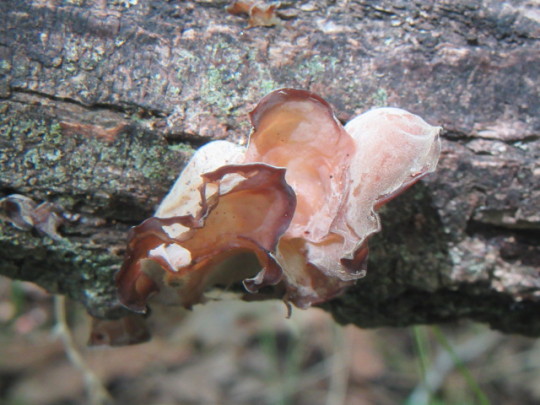
View On WordPress
#Apocynum cannabinum (Hemp Dogbane)#Asclepias syriaca (Common Milkweed)#Auricularia americana (Jelly Tree Ear)#Chauliognathus marginatus (Margined Leatherwing Beetle)#Corimelaena pulicaria (Black Bug)#Diospyros virginiana (American Persimmon)#Elephantopus carolinianus (Leafy Elephant&039;s Foot)#etraopes tetrophthalmus (Red Milkweed Beetle)#Oebalus pugnax (Rice Stink Bug)#Tragia betonicifolia (Betony-Leaf Noseburn)
0 notes